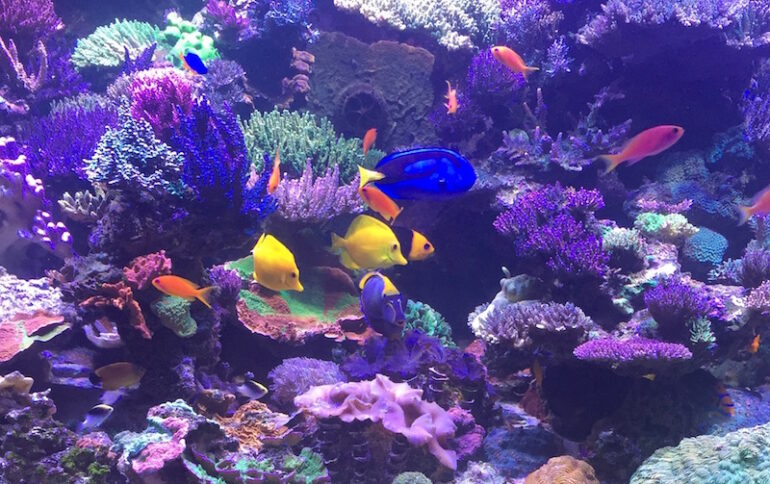Recently while watching an old Saturday Night Live show with my daughter, Gilda Radner as Roseanna Rosanadanna responded as she always did to Jane Curtin that “It’s always something, if it’s not one thing it’s another. Within seconds of this an alarm on one of my tanks alerted me that the temperature was at 82, so I knew it was time to make some changes.
Having these two events happen at the same time confirmed what I have been thinking for a long time: it is always something in this hobby. If it is not something breaking, needed cleaned or maintained or testing it is something else. It also made me realize what a resilient bunch we are that many of us stick with this hobby despite there seemingly always being something, usually negative going on.

As I have noted before, one of the blessings I have had of being in this hobby is that I have made a lot of long-term friends in this hobby and as friends do, we have shared many of the adventures and mis-adventures that we have had. What is funny is how many of us have had the same thing happen to us. So, since so many of us know exactly what I am talking about when I say it is always something I am going to share some of the stories and experiences that have been shared with me.
I do so to point out that none of us are perfect, or even near so, but also in the hope that when any of you have one of these experiences, and you will, you will know that you are not alone. Some of them are common, some I have only heard of once, but all of them provide insight into what this hobby takes.
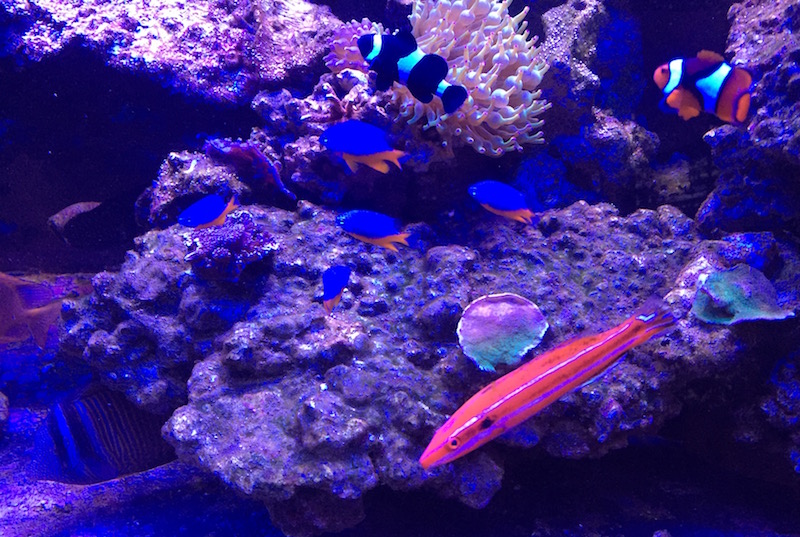
The first and most common something that happens way too often is the loss of a fish or coral for what can only be considered stupid reasons. Stupid because either we do something stupid, or because the fish are just too stupid to live. First, among these is losing a fish because it jumps out of the tank. I saw that as all of my tanks are covered, and I mean completely covered. I now use tight-fitting mesh covers that fill almost every square inch above each tank.
I do this as in addition to loving all corals I am also addicted to wrasses and as we all know, for some reason wrasses love to jump out of the tank. I find this interested in that after being on reefs and seeing wrasses in their natural habitat I have never seen wrasse jump out of the water for any reason.
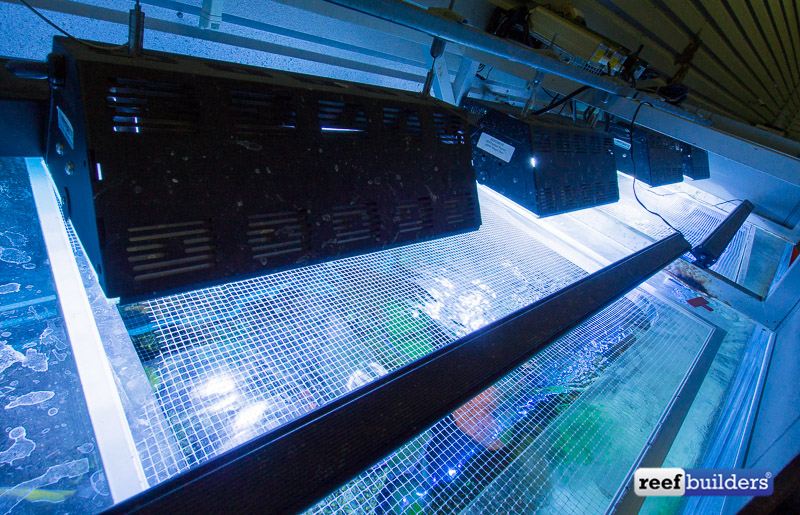
However, in the confines of a tank, and even a big tank, my wrasses seem to be constantly seek ways to become fish jerky. This behavior is so prevalent that one time while walking in front of my tank a Flame Wrasse literally jumped out as I was walking by and I caught it on the fly. This made me realize that he would do it again unless I found a means to keep him and his brethren in the water.
So this is why tight fitting covers are now employed on all tanks. However, this is not good enough, in that Despite these tight covers these fish still from time to time find the smallest spaces, seemingly smaller than they are, and fling themselves through them resulting in their crispy demise. So now I am constantly vigilant to any small cracks or spaces that may exist in the tank’s covers and cover them with plastic or PVC lest these aerial daredevils find them and exploit them to their own detriment.
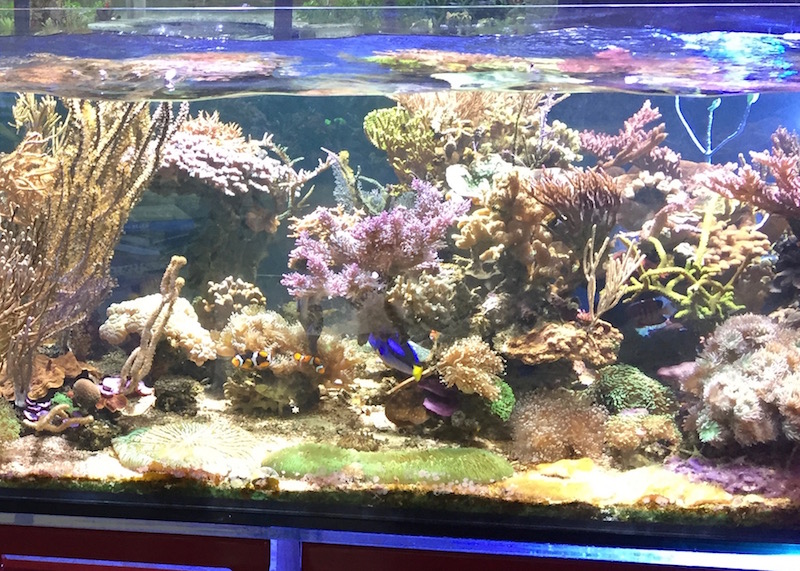
However, even this is not good enough, as I said there is always something. I now on several occasions, have lost fish that jumped out in literally seconds when the cover was off for me to clean the tank, do maintenance or move corals around. It was like they were just sitting there waiting for the lid to come off so they could escape, and I think I have nice comfortable tanks for them to live in.
On at least two occasions, my phone rang while I was working in the tank with the light off and in that brief moment when I turned to pick up the phone, poof they had escaped and committed aerial suicide. As a result, I no longer answer the phone when I am working in the tank lest I lose another expensive fish. After all it is very unlikely that someone is calling to tell me that they have a Walt Disney or Homewrecker tenuis for me so why run the risk.

Even worse than losing fish due to their jumping to their death is having fish simply suddenly disappear, especially when they were eating, healthy right before they suddenly vanish. From talking to people this seems to happen frequently and when it does most of us then spend a ridiculous amount of time trying to find this suddenly invisible fish.
And when I say invisible, I mean there is no rotting carcass, no skeleton or bones of any type. It’s as if the fish never existed in the tank, and despite our looking between every rock and in every space there is absolutely no sign of the fish anywhere. The most memorable case of this in my tanks happened very early in the hobby, before I kept reefs.
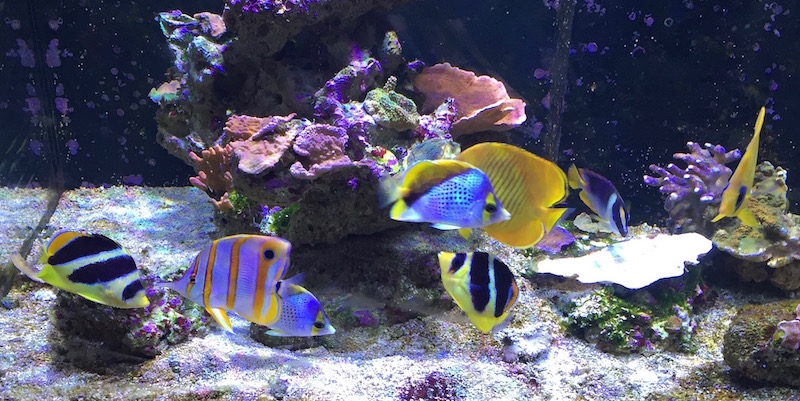
I had a typical 55-gallon tank decorated with dead coral skeletons and there were virtually no blind spots in the tank. The tank housed a typical assortment of fish including a very nice Radiata lionfish. I has to travel for a business trip for 3 days and my girlfriend was in charge of watching the tank.
When I came home all was good, except the Radiatia lionfish was nowhere to be found. This fish was the size of a large fist when I left, so when it died it would have disrupted the chemistry in the rest of the tank. We spent hours looking for any sign of it and found none. Even when I broke down the tank 3 months later no bones, or sign of a skeleton ever surfaced. So this got me started on realizing that in a saltwater tank it is always something.
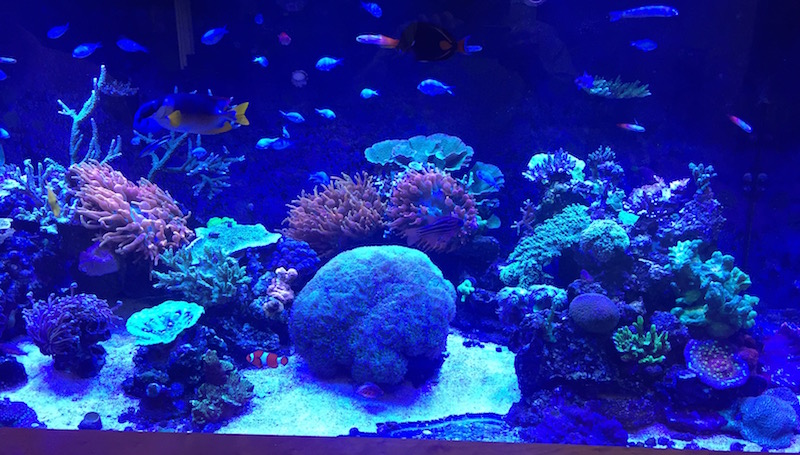
In another form of suicide, some fish and anemones for some reason are magnetically attracted to powerheads in just about everyone’s tank for no apparent reason. As a result, I and my friends have all had the experience of having fish dive headlong against the current into the propeller of a powerhead or get trapped along the intake, even after the powerhead had been in their tank for months or years.
To us this makes no sense and is frustrating in that we all want strong water movement, but with fish we have to make sure to keep them out of harm’s way. Even less understood is why anemones, also often after time has passed, seem to love to get shredded in the turbine-like powerheads we use.
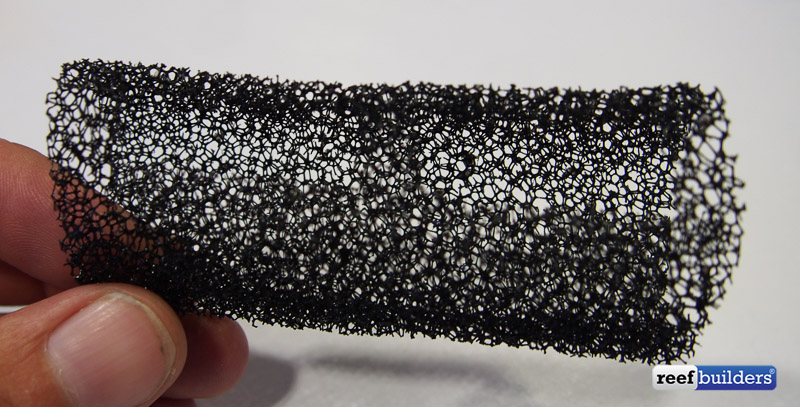
This is unfathomable to us in that these anemones were often seemingly happy in a locale in that they remained there for long periods of time and then suddenly for no reason they felt compelled to move to the nearest powerhead and slide into it despite being shredded as they did so. So for this reason I now not only keep a close eye on my tank’s anemone populations, but I also cover and place the powerheads so that access to them is as reduced as possible, but to be honest some fish still find their way into the blender any way.
Other things that have occurred that confirm there is always something is the time I was in a rush and inadvertently let the day’s dose of calcium hydroxide (kalkwasser) get dispersed via a powerhead. Despite immediately removing any of the powder from the corals once my mistake had been realized, the next day revealed what it would look like had it snowed in my tank.
Needless to say a bleaching event I would not forget. And speaking of snowing, I have seen and been told enough by my fellow hobbyists about the times, before they or I understood saltwater chemistry that well, of times they tried to adjust their alkalinity/calcium levels only to see what looked like a winter wonderland occur in their tanks.
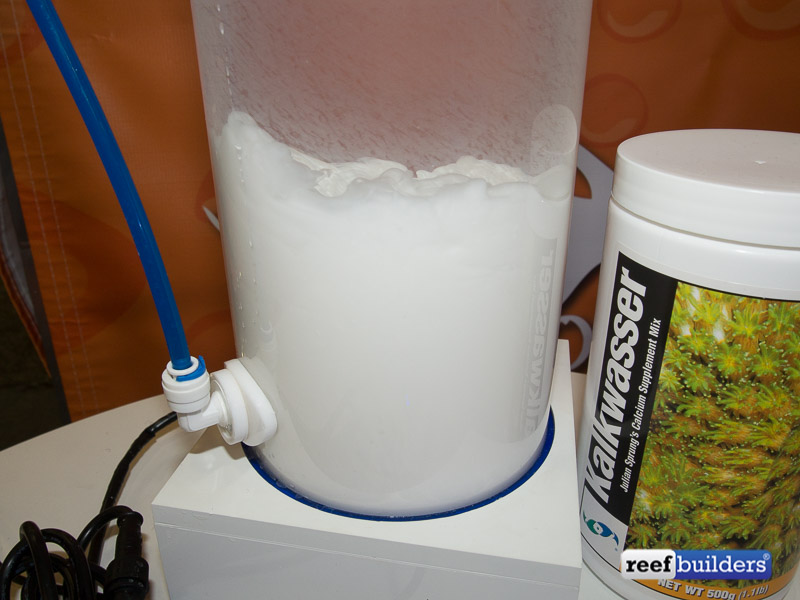
Whatever they/I did caused calcium carbonate to precipitate to such a degree that it looked like snow within our tanks. Needless to say this taught me the value of going slow whenever I make any chemical adjustments to my tanks.
In addition to there always being something, my family frequently sites the adage that no act of kindness, no matter how small goes unpunished. In this regard, I have learned the hard way that at times trying to help out a friend when not planned for properly can produce bad results. What I learned came after I tried to help out a friend whose tank had fallen on hard times and was covered in algae.
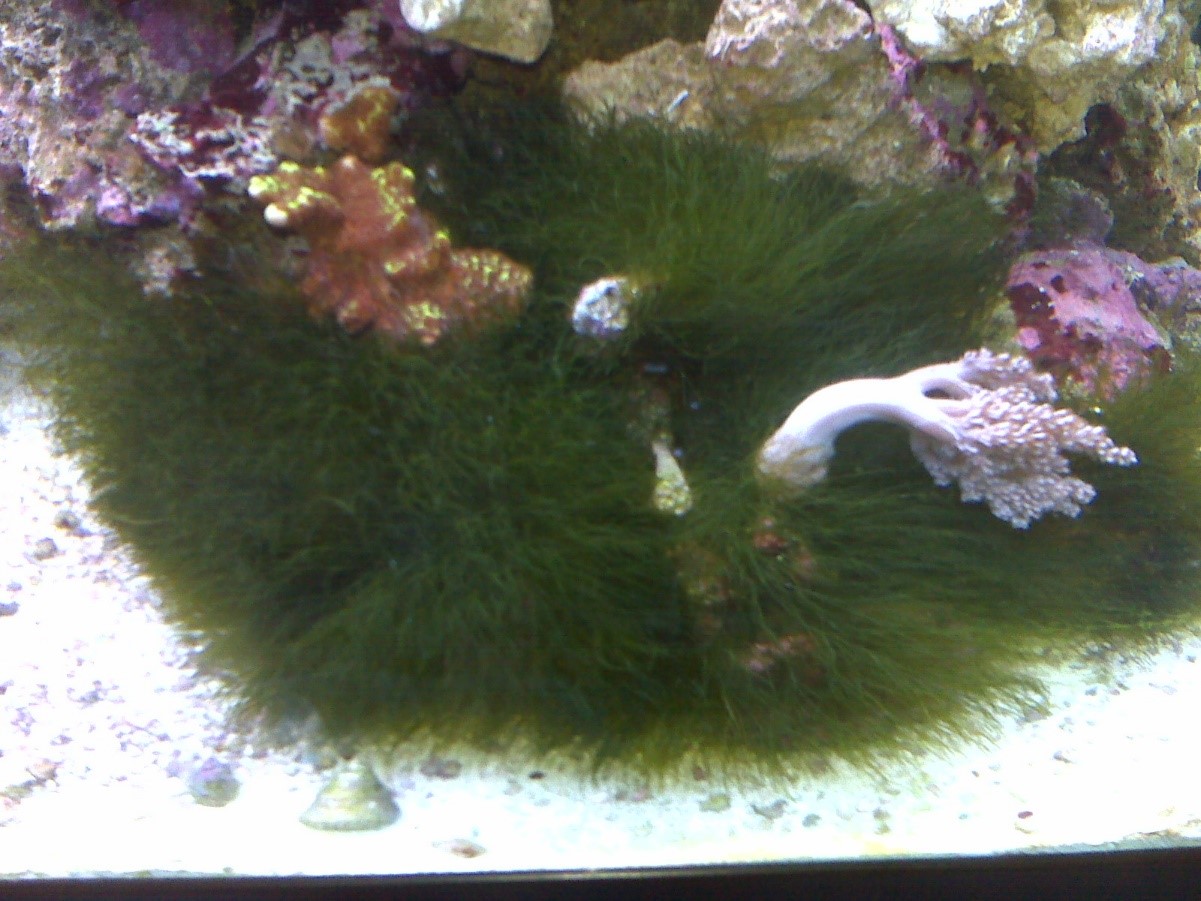
Literally every rock and surface in this tank had algae growing on it of one type or another, but his fish were all doing fine. Since we realized we would need to tear it all down and basically start from scratch and this would take some time, we decided that I would house his fish in my quarantine/frag tank until his tank was ready.
This seemed like a harmless thing at the time and he had had most of these fish for five or more years so we did not see how there could be any problem. What I did not realize at the time is that most of the fish in this tank were subsisting almost exclusively on the algae that was present in this tank. So when they were introduced into my quarantine/frag tank the contents of their digestive tracts quickly made it into my tank.
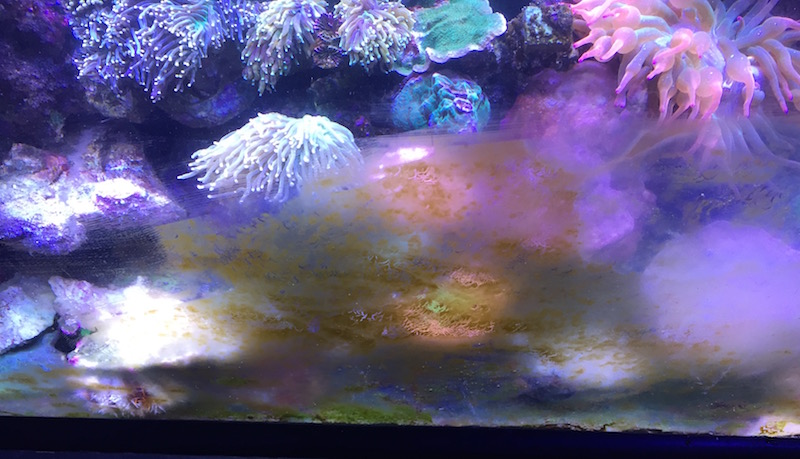
Until this time I always thought that the digestive process renders most material inert. Sadly, soon after I introduced these fish I realized that this was not the case. Within days of their introduction algae of various types began to sprout up on virtually every surface. Digestion may have consumed much of the algae, but sadly the spores of these algae were not affected by the process.
As a result, I soon came to realize that from then on when I introduced a new fish to my tanks I not only had to quarantine for external parasites, but I also needed to quarantine for what was present in their digestive tracts, Especially, if it was algae, as the algae that came from these fish took nearly two years to completely eradicate from my tanks.
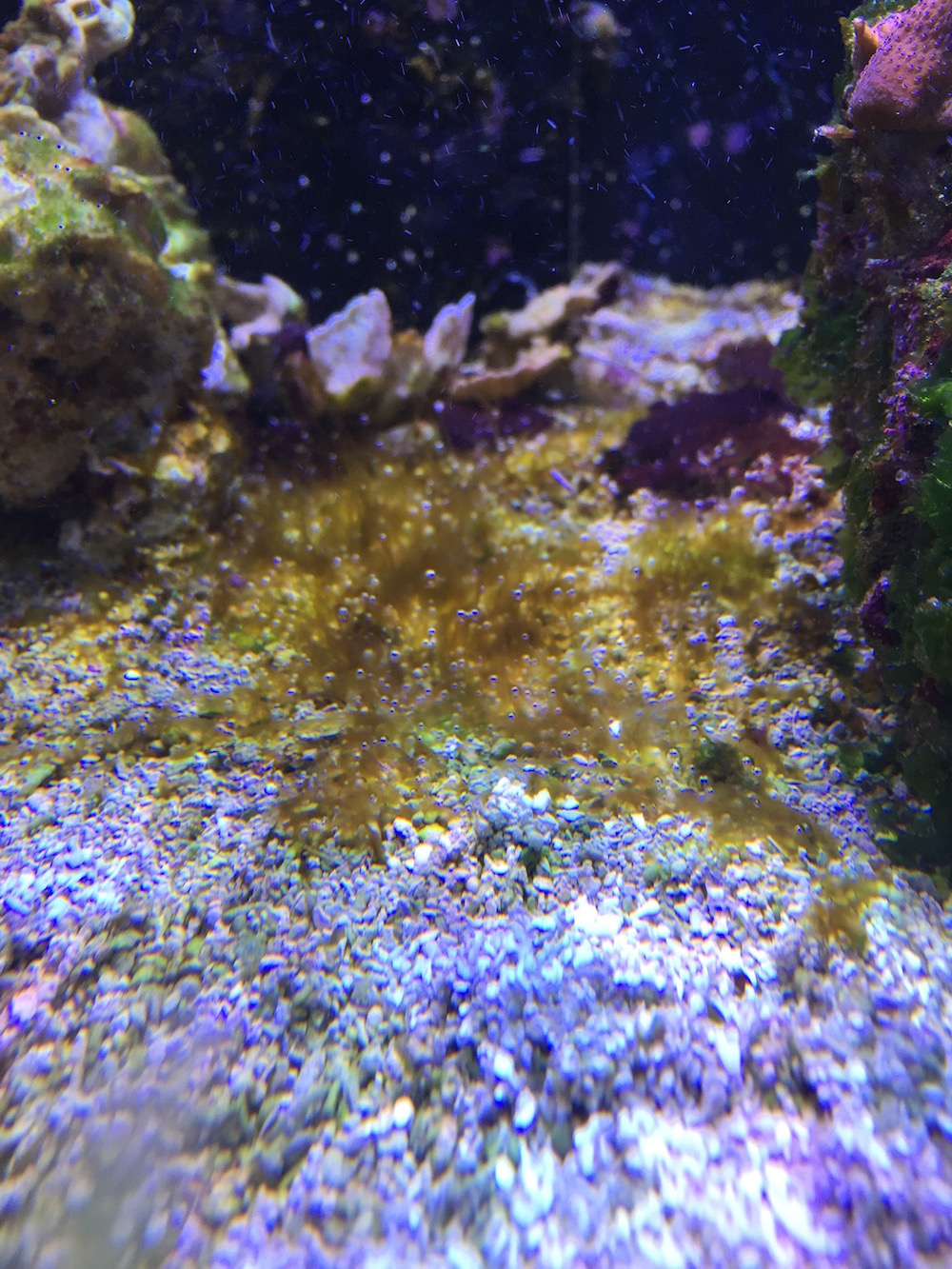
I have also had a similar problem when I tried to help another friend by holding his giant Derasa clam, that he had had for over 5 years, while he redid his tank. As with the introduction of algae this clam apparently brought some pest with him. I say that as within 3 days of my adding it to my tank, the three clams I had been keeping for over 3 years all perished and on day 4 this giant clam also perished. After testing the water and looking for parasites or other clam pests nothing showed so this was just another something that was not explained.
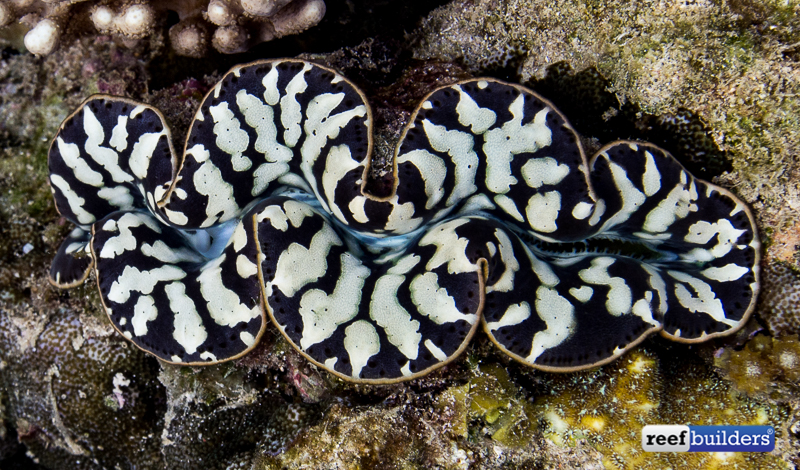
Battling algae is one aspect of this hobby where it is always something. I say that as just about everyone I know has battled it in one form or another over the years. Similarly, most of us have also had the bad experience of having to battle external parasites on our fish, especially those that are newly purchased.
I realize that probably fewer than 20% of us have quarantine tanks, and this is stupid considering what the cost would be if/when a disease outbreak occurs to our reef housing expensive fish, yet we still do not do it. Having said that, a friend of mine who does quarantine all of his new fish still had a major outbreak after he introduced fish that he had had in quarantine with no problems or signs of pathogens for 3 months.
In this case, just the simple task of catching and moving the fish from his quarantine tank, where they looked “clean”, to his show tank was enough to cause a major outbreak and infect not only the new fish, but also many of his old fish some of which he had for over 10 years. And this occurred despite his running UV, feeding garlic enriched and probiotic foods and having done the quarantine. This again shows that it is always something.
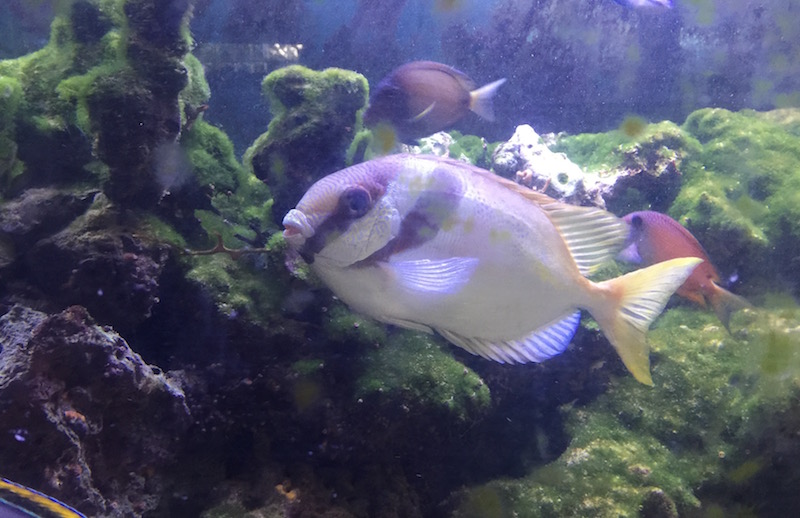
One of the stranger its always something occurred with some of my fish but then occurred in a worse way to one of my friends. Like many of us I use a gel type super glue to mount frags and to hold corals or live rocks in place.
To do so, a large gob of glue is placed on the bottom of the piece to be mounted and then it is set into place. For some reason on numerous occasions the fish in my tanks seem to think this super glue is appetizing so on some occasions when I wasn’t vigilant they bite at the gob of superglue.
On a couple of occasions, it sealed their mouths shut, so I either had to catch them and remove it, or give it some time and wait for it to drop off as over time the water reduces its stickiness. So luckily for my fish to date this has not been a traumatic experience.
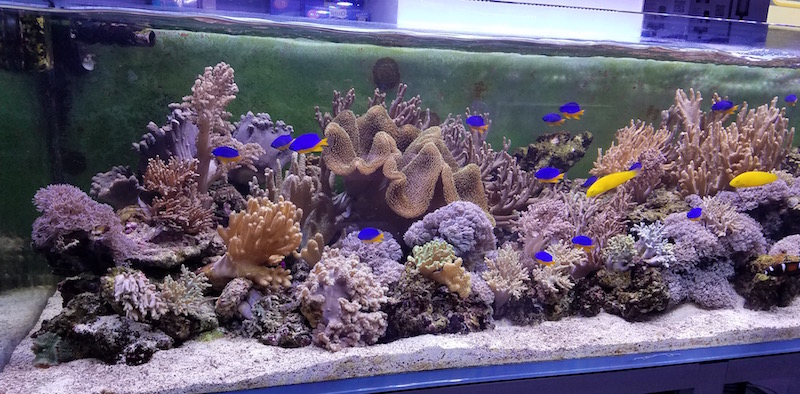
However, for a friend of mine his blue tang was not so lucky. His blue tang was over 5 years old and over 7 inches in length, when it decided to pick at the super glue on the bottom of a frag that to be mounted. Like mine, this sealed its mouth and he caught it and removed the glue from its mouth.
Unfortunately, during this process, the tang had somehow managed to ingest some of the glue unbeknownst to him. Two weeks after this event the tang was dead. When he told me this I had him dissect the fish to see what was the cause. To our astonishment there was a hard piece of glue lodged in his digestive system smaller than a grain of rice.
A single bite of the glue had been enough to kill this large beautiful fish. This has not only confirmed to us that it is always something, but it has also made us be more vigilant when we are placing and gluing new frags.
Since I now have 6 tanks running the concept of there is always something has been magnified to me. This is especially true of equipment malfunctions, leaks, electrical issues or just dumb things happening. And all of these are seemingly negative things about the hobby.
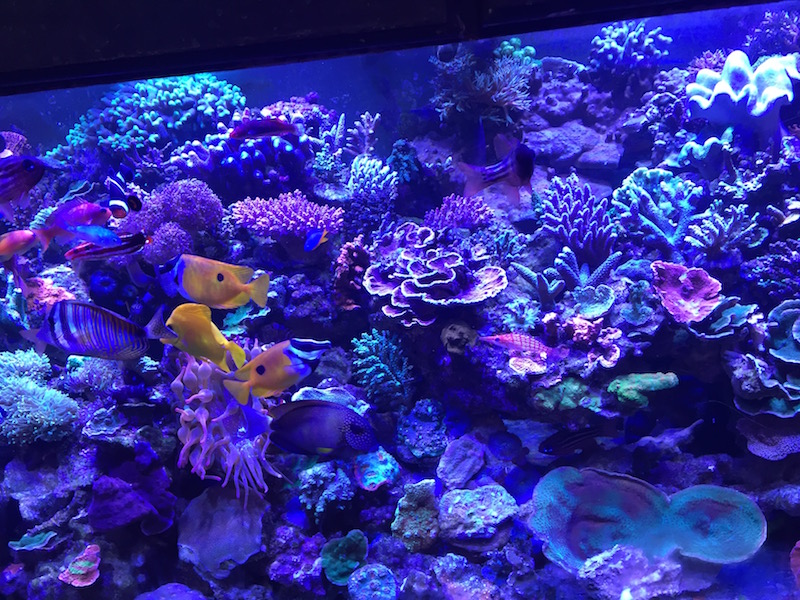
However, in terms of there always being something going on, I remember a story that Sanjay told me that shows that every once in a while this something can be positive. Like me, Sanjay also keeps close-fitting covers on all of his tanks. But despite this a blue hippo tang the size of the palm of his hand still managed to find a space big enough to jump out of Sanjay’s big tank.
When Sanjay found him he was pretty dried up so Sanjay did what most of us do and got ready to flush him away. However, when Sanjay placed him in the water he saw what he thought was the fish taking a breath. So he immediately took him from the bowl and and placed him in a net back in his tank.
Amazingly over the next few hours the fish kept taking in water, became undessicated rehydrated, kept breathing and survived. Despite this and its near demise this tang is now alive 5 years later and does not show any signs of having gone through anything.
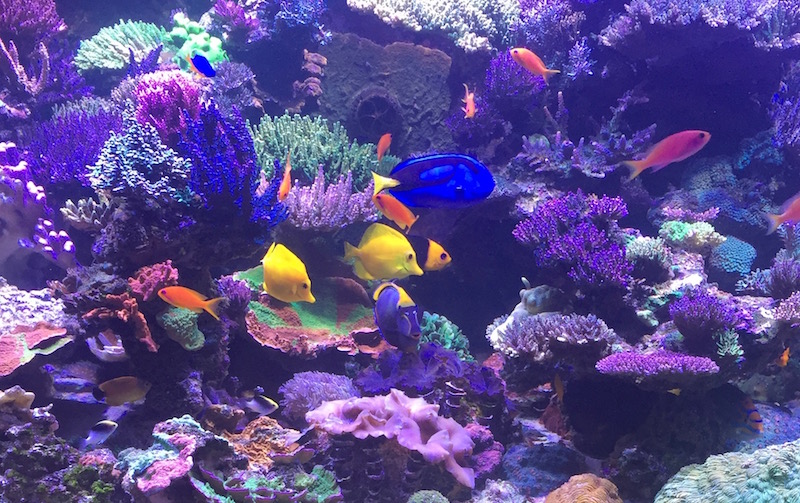
So in reality Sanjay really did save Dory. So while this hobby can be daunting and frustrating and there really almost always something going on, if you stick at it long enough this aspect of the hobby becomes less overwhelming. While it is always something, for the most part, you can take heart that this something is shared by most of us who have been in the hobby for any length of time.


